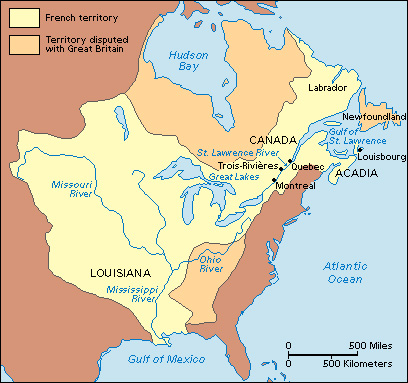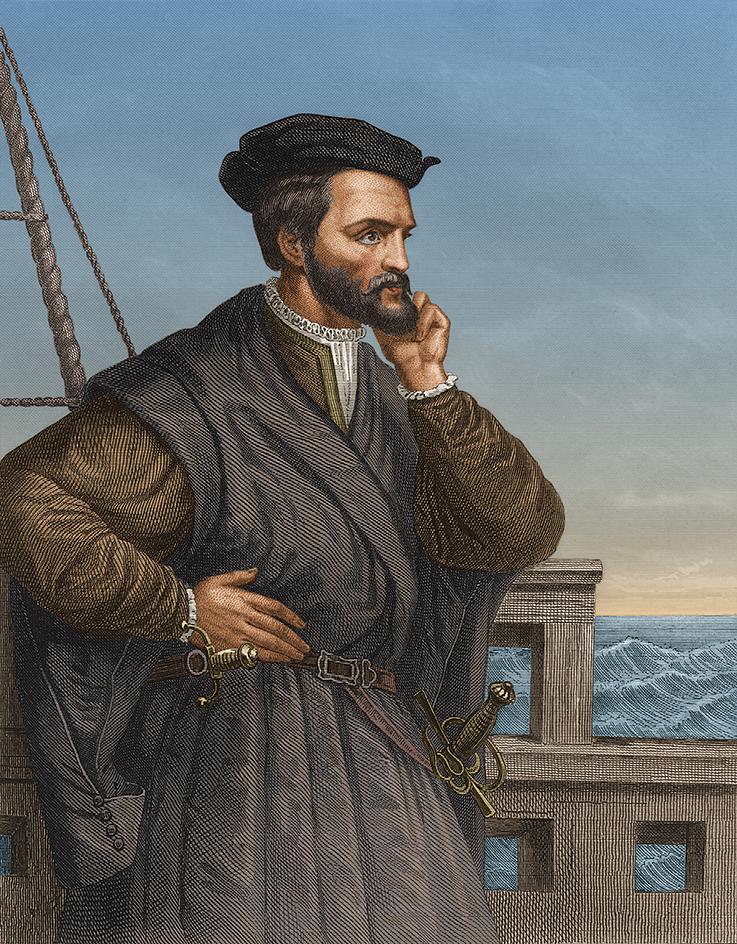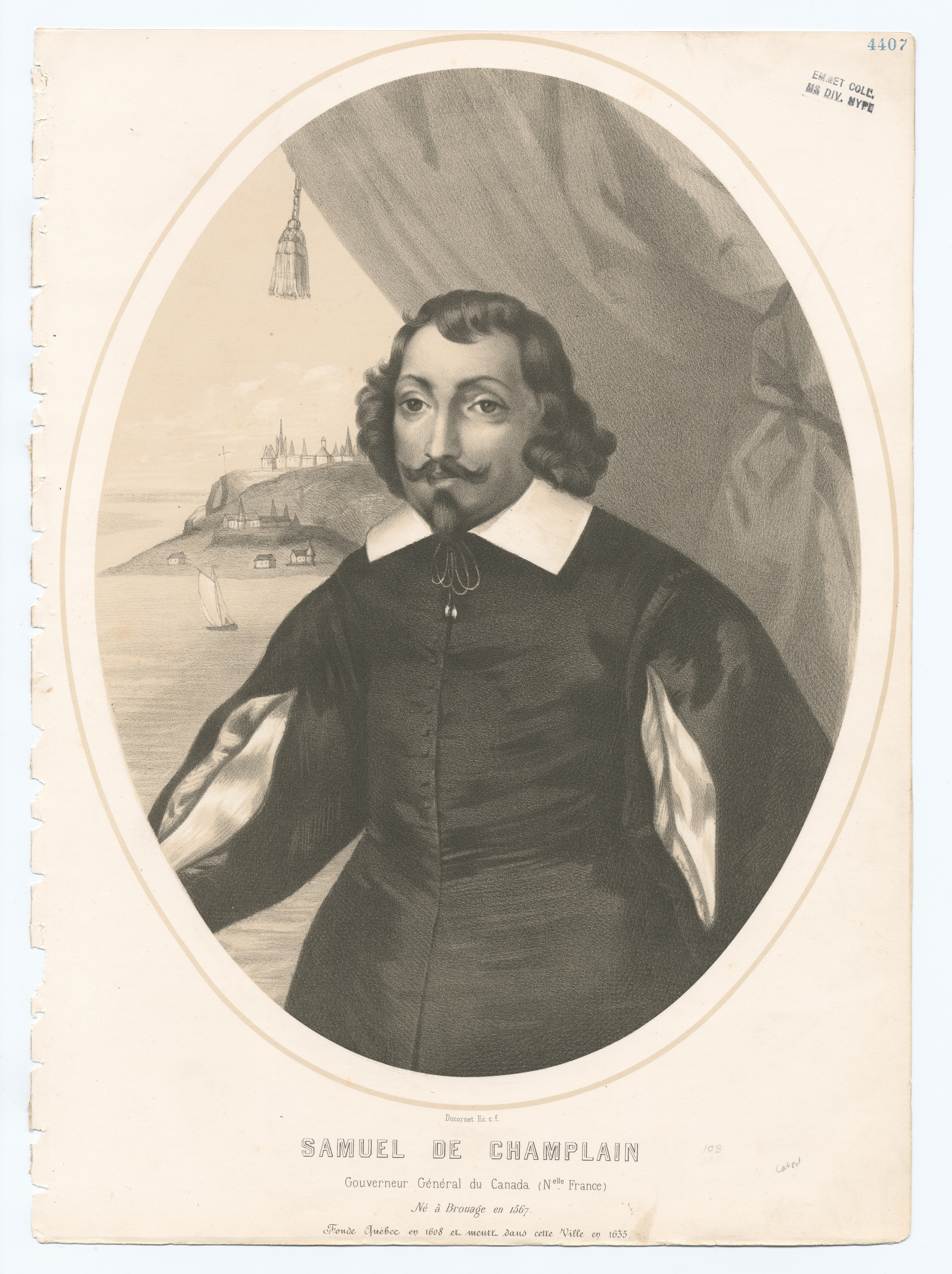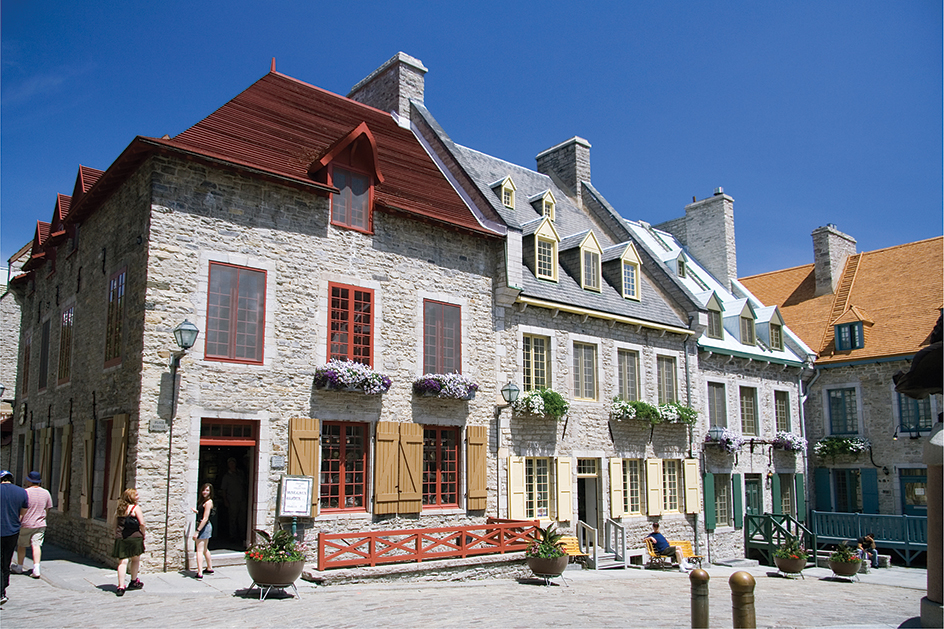New France was the French colonial empire in North America. The empire began during the early 1600’s and lasted about 150 years. At its height in the early 1700’s, New France included three colonies—Canada, Acadia, and Louisiana. Canada and Acadia covered much of what is now eastern Canada. Louisiana lay in the Mississippi River Valley of the present-day United States.

The term New France often refers only to the colony of Canada, where about 75 percent of the empire’s settlers lived. France lost this territory to Britain (now the United Kingdom) in the Seven Years’ War (1756-1763). But the French influence on Canadian culture remains strong today. Many Canadians, chiefly in the provinces of Quebec, Ontario, and New Brunswick, speak French. French, along with English, is an official language of Canada.

Exploration and settlement.
The first official French expedition to North America occurred in 1524. That year, the Italian navigator Giovanni da Verrazzano explored the Atlantic Coast for King Francis I of France. The French explorer Jacques Cartier sailed to Canada in 1534, 1535, and 1541. He became the first European to reach the Gulf of St. Lawrence. Cartier claimed the area surrounding the Gulf of St. Lawrence for France.

During the 1500’s, French fishing crews began to drop their nets off the coast of what is now the Canadian province of Newfoundland and Labrador. They also started to trade kettles, knives, and other European goods to local First Nations people (American Indians) for furs. Canadian furs, especially beaver pelts, became increasingly valuable because of the growing popularity of fur hats in Europe.
In 1604, the French explorers Pierre du Gua (or du Guast), Sieur de Monts, and Samuel de Champlain established Acadia along the Atlantic coast. Champlain founded the settlement of Quebec along the St. Lawrence River in 1608. Soon afterward, French fur traders established other settlements on the St. Lawrence River. Roman Catholic missionaries founded Montreal in 1642. It was originally named Ville-Marie.

New France grew slowly. It had only a few thousand settlers by 1660. In 1663, King Louis XIV made New France a royal province (colony) of France. Between 1665 and 1672, he sent over about 2,500 settlers. Among them were many women intended as brides for the soldiers and settlers already in the colony.
In 1672, Louis de Buade, Comte de Frontenac, became the governor general of New France. He encouraged fur traders and explorers to help expand the colony. Traders then began to establish a number of posts along the Great Lakes and Hudson Bay. Also in 1672, the French-Canadian explorer Louis Jolliet and the French missionary Jacques Marquette became the first white people to find the upper part of the Mississippi River. The French explorer René-Robert Cavelier, Sieur de La Salle, followed the Mississippi to the Gulf of Mexico in 1682. He claimed the river valley for France and named it Louisiana in honor of Louis XIV.
In 1699, Pierre Le Moyne, Sieur d’Iberville, established the colony of Louisiana. The French then built a chain of forts to link Louisiana with the rest of New France. The population of New France rose from almost 25,000 in 1720 to about 65,000 in 1760.
Colonial life.
The chief governing officials of the royal province were the governor general and the intendant. The governor general supervised the army and relations with the First Nations. The intendant controlled finance, law enforcement, and other local matters.
The fur trade was the chief economic activity in New France. Many young colonists were frontiersmen who made their living trading for furs. They were called coureurs de bois (vagabonds of the forest). Most coureurs de bois became farmers after they married. As a result, agriculture grew in importance as an economic activity. Farmers raised livestock and grew mostly wheat and oats. Fishing and lumbering also developed into important industries. In addition, the colony had a brewery, an ironworks, and a shipyard.
By law, all colonists were Roman Catholics. The Catholic church played a major role in New France. Female religious orders provided hospitals in the towns. They also ran schools.
The towns of Quebec, Montreal, and Trois-Rivieres were the centers of trade and culture. Church and government officials and wealthy landowners lived in splendid stone homes in the towns. Merchants and craftworkers had smaller stone houses. Farmers lived on sections of land called seigneuries. The king of France granted the seigneuries to nobles, religious groups, military officers, and merchants, who rented the land to farmers. The landowners provided their tenants with a flour mill and a church. Most farmers lived in one- or two-room log cabins.

Both farmers and townspeople in New France often enjoyed dances and other merry social gatherings. Members of the upper class attended grand balls at the home of the governor general. In winter, the colonists had sleighing parties and held horse races on the frozen rivers.
The British conquest.
French and English settlers began fighting for control of the fur trade in the St. Lawrence River Valley in the early 1600’s. The English colonies developed along the eastern coast of North America. French expansion during the 1600’s angered the English colonists, who also wanted to expand westward.
Members of the two groups and their Indian allies fought each other in a series of wars from 1689 to 1763. Britain gained Newfoundland, the mainland Nova Scotia region of Acadia, and the French territory around Hudson Bay under the Treaty of Utrecht in 1713. During the next 30 years, the French built forts in the Ohio Valley and across the southern parts of what are now the Canadian provinces of Manitoba, Ontario, and Saskatchewan. Fighting began again in 1744. British colonists captured the French fort at Louisbourg on Cape Breton Island in 1745. However, the French regained it in 1748.
The final struggle began in 1754. It is known as the French and Indian War in the United States. The conflict spread to Europe in 1756. It is called the Seven Years’ War in Canada and Europe. The French were winning until 1758. That year, British forces captured Louisbourg and several key inland forts. In 1759, the British captured Quebec. The fighting ended when the British took Montreal in September 1760. France gave up Canada and part of Louisiana to Britain in the Treaty of Paris in 1763. France had given the rest of Louisiana to Spain in 1762. France got back Louisiana from Spain during the early 1800’s and sold it to the United States in 1803.
